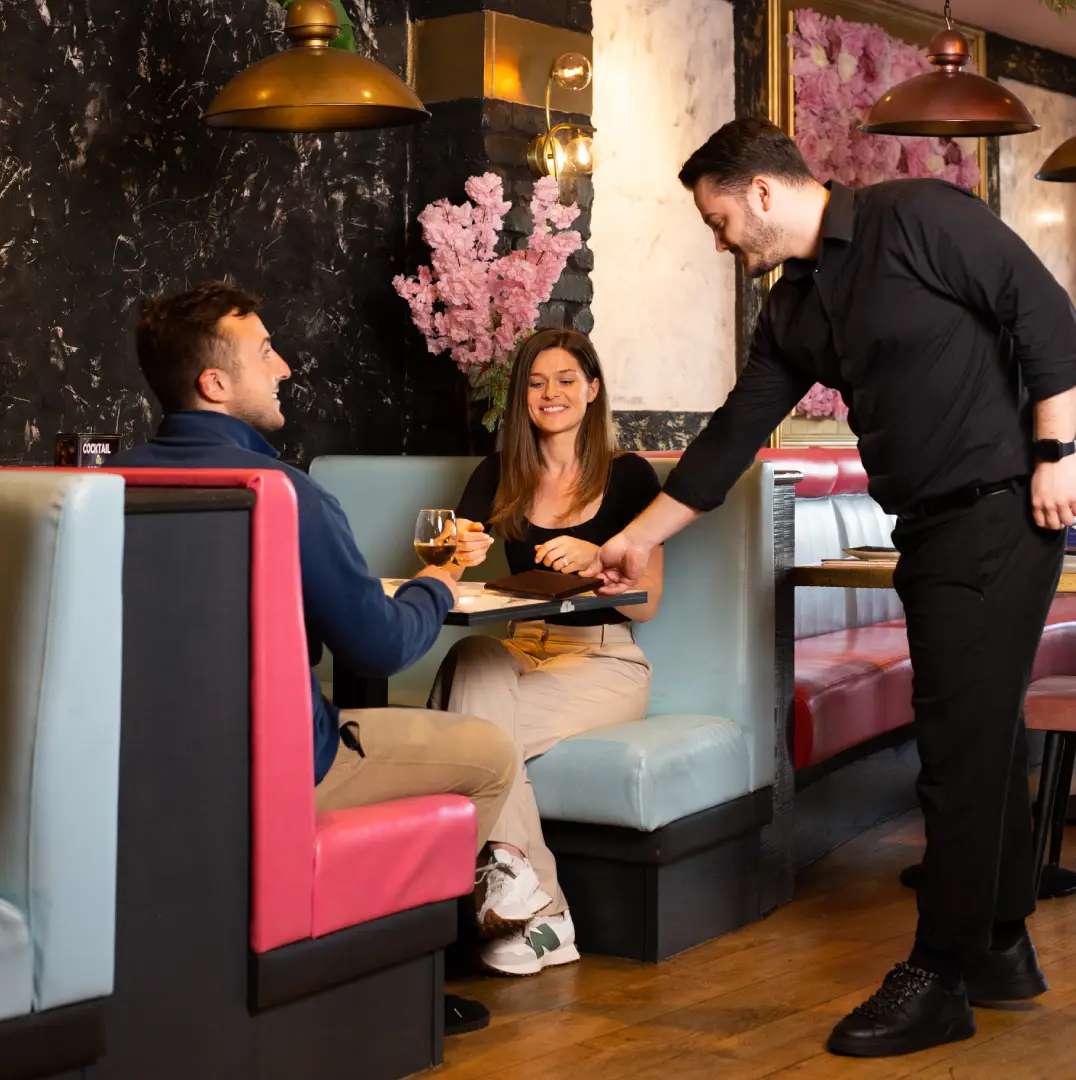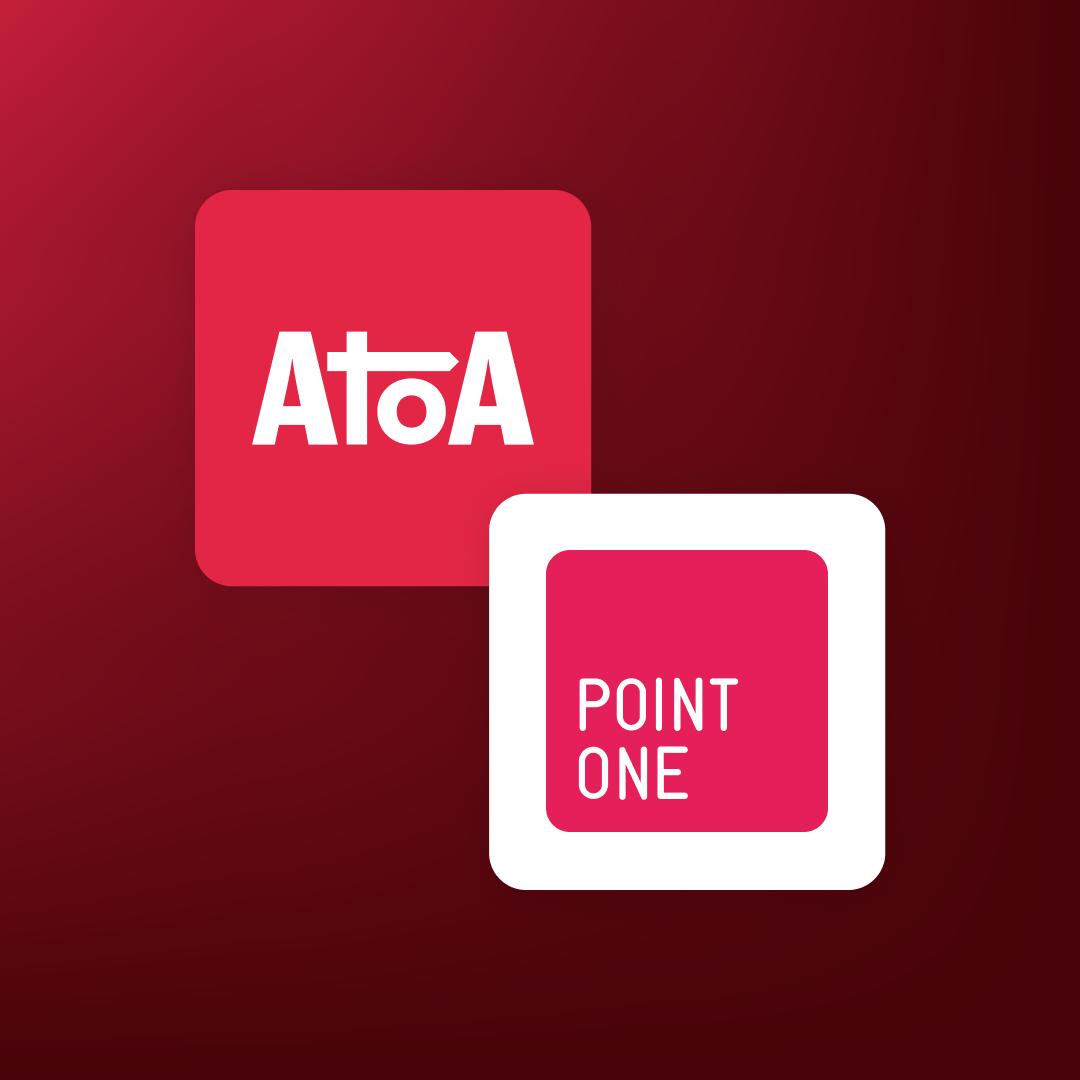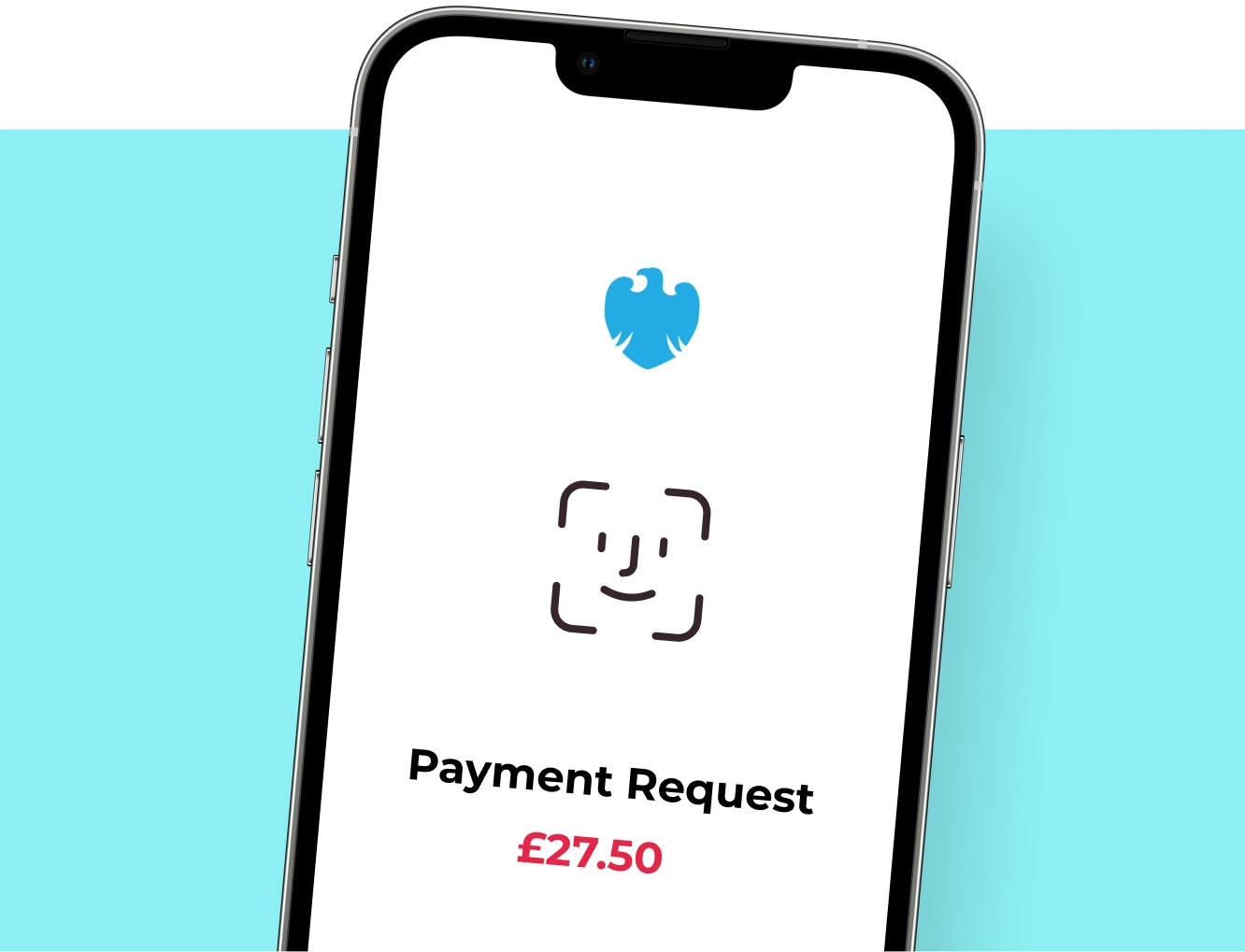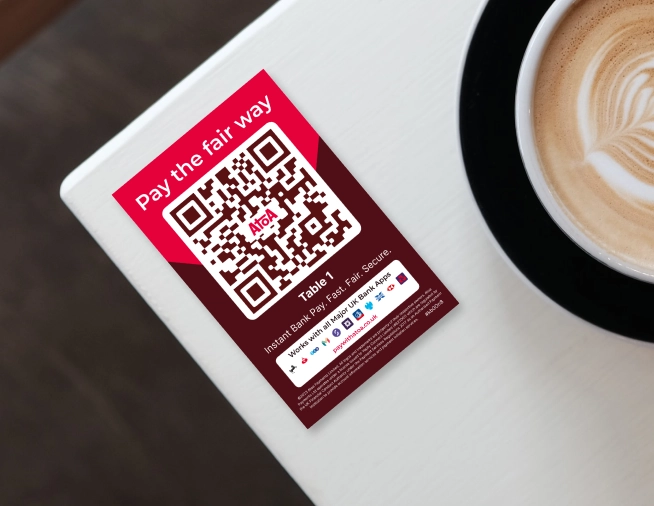Ready to get started?
Get paid faster and save up to 50% on fees with Pay by Bank.
Tired of your restaurant tech feeling like it’s stuck in the Stone Age? 78% of limited-service restaurants and 90% of franchisees say a tech upgrade is their secret weapon to boost profits. Turns out, they might be onto something. A modern hospitality point-of-sale (POS) system isn’t just about fancy tills. It can be the key to more profitable restaurants with blink-and-you-missed-it digital payments and better customer experiences.
Ready to see the difference a POS solution can make? Continue reading to discover the 5 ways a POS system can transform your hospitality game.
(Spoiler: It’s not just about faster payments.)
What is a point-of-sale system?
Before we dive into the thick of it, let’s be sure we’re on the same page. Point of sale is a system where customers can order and pay for things. It’s where the transaction happens, whether by the cash register, a card reader, or a mobile app.
For example, when you go to a restaurant and pay for your meal, the waiter brings you the bill and you use a POS to pay.
However, high-powered hospitality POS software can do more than just process payments. It can also track inventory, manage your team, and fire out handy reports. This information can be crucial for local businesses, helping them get stock levels right and stretch out profits.
So, from handling table reservations and managing orders to accepting instant payments – service businesses like restaurants, pubs, and hotels can use an industry-specific POS system to up their game. Without further ado, we’ve identified five key areas where this technology could change the game for your ramen bar or cocktail spot, giving you instant access to a better business.
1. Improve efficiency with POS payments
Hospitality POS systems support various payment methods like credit and debit cards, contactless payments, and mobile wallets, to offer convenient checkout for customers.
POS systems are efficient and reduce waiting times. This means tables free up quickly, allowing the business to serve more hungry guests. Many hospitality and retail POS offer integrations that improve your business, such as open banking payments, inventory, ordering and other handy tools.
If you offer table service, QR code receipt payments can give your bar, restaurant or salon an edge. They allow customers to order and pay in one quick scan to make their visit speedier or more laidback. Our hospitality POS partner pointOne lets users add our QR codes on their receipts which customers can pay at their own pace.
The same goes for self-service kiosks connected to POS systems. Massively suited to takeaway and self-service restaurants, they give customers a quick order and payment experience. This is ideal if you’re running a busy lunchtime spot in the city.
Both table and kiosk QRs open up possibilities for much smoother service and a better customer experience. Which in turn, can lead to return visits. They may also improve the experience for guests who like to order in their own time. For example, customers can order from a QR menu and edit dietary requirements, or choose add-ons and upsells at their own pace. Why not let your guests leave notes to help your kitchen staff avoid mistakes?
2. More covers, more money
We mentioned in the previous section that more daily covers can only mean one thing. More cash flow! Reliable payments like pay by bank can help you tap into these funds quicker.
But it’s not all about money. We know that top-notch service is also high on your agenda. Using digital payments, such as QR codes, can improve how staff take orders. Servers can accept payments directly at the table with QR codes, or you can even print them on receipts for customers to pay in their own time. This reduces waiting times and minimises errors, leading to award-winning service.
Use QR codes built into your POS to provide self-service or independent payments to your guests. Innovative payment methods like QR codes often come with extra benefits and features. For instance, we let customers leave your staff a tip and a Google review after payment.
Don’t forget the ability to split bills easily in a group! This feature allows customers to manage their share smoothly, leading to a faster and more organised checkout experience.
3. Let your POS help with orders
I already mentioned that food and drink orders can be tough to juggle. Allergies and personal preferences have to be carefully documented to avoid any mishaps. Using a QR code menu gives your guests more breathing room. Plus, you could add a compulsory allergy form on digital orders to stop anyone slipping through the net.
Allowing guests to modify orders can be a big deal, especially if you’re dealing with fast food or street food. Letting the customer consider the menu without being rushed to order can be beneficial. Just watch those tickets for halloumi fries and extra onion rings rolling into the kitchen! Additionally, you’re looking at more upsells and fewer complaints, which can never be a bad thing…
4. Get to know your business better
When you’re running a busy floor staying on top of reports, spotting customer behaviour patterns, and popular menu items can be tough. So why not let POS analytics do it for you? These handy insights can be used to tailor menus, create promotions, and manage staffing levels – all of which reflect on your customers’ experience. Positively, of course!
Another massive benefit is inventory tracking. Busy people don’t have time for shopping lists or last-minute runs to the supermarket for 10 pints of milk. A good POS system can track your ingredients and stock down to the last grain of rice. Plus, with all those extra upsells rolling in, you can see which menu items are hitting the spot.
5. Reward customers to keep them sweet
It just so happens your POS system could be the secret weapon to make every guest feel like part of the family. Beyond just ringing up orders, a modern POS keeps track of the good stuff: your customers’ fave dishes, those little extras they always ask for, and even any dietary needs they might have. Armed with this info, your team can swoop in with personalised recommendations (“The usual oat latte with a dash of cinnamon for you today?”) and even remember repeat customers by name.
Remember those flimsy cards you used to collect stamps on for a free coffee? Well, your POS system can level up that experience. Think exclusive offers tailored to each customer or extra perks to make them feel like part of the tapestry. They get an occasional freebie, and you get the repeat business.
Which POS should I choose?
The best POS depends on your business type and its specific needs. Research different POS providers before you make any commitments. We’ve kickstarted your research below and shared more detailed thoughts on the top 10 restaurant POS in the UK for 2024.
Epos Now: Varied features for inventory management and staff scheduling. It is suitable for larger establishments and chains.
pointOne: Known for its user-friendly interface, pointOne is an excellent choice for casual dining and takeaway kiosks.
Tevalis: A UK-based company offering POS solutions for hospitality businesses.
Presto Express: An efficient system designed for quick-service restaurants.
💡You can use Atoa payments with quite a few from the list to save a chunk on fees, highlighted in the comparison table below.
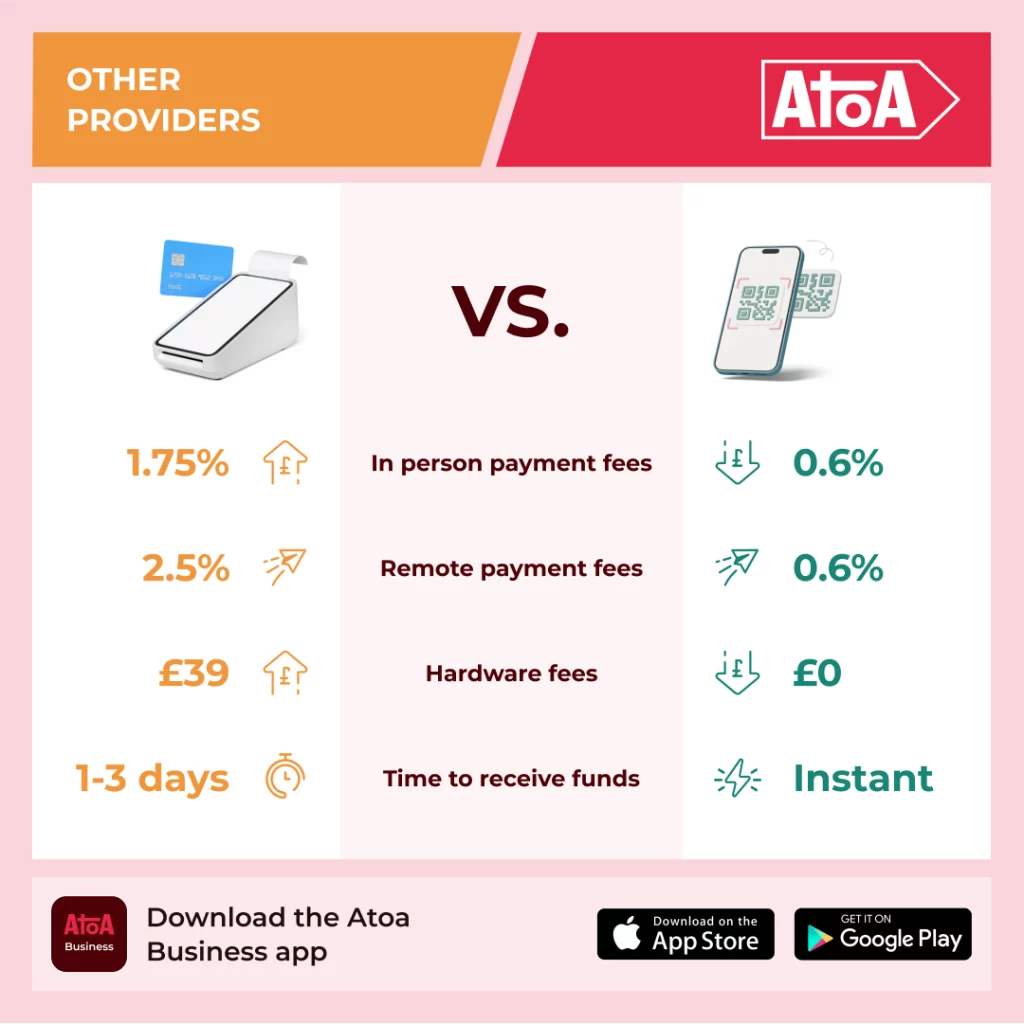
FAQs
What are the must-have features of any POS system?
Look beyond the basics of taking orders and processing payments. Consider how your space works – do you need tableside ordering or reservation management? Also, consider whether the system has room to grow alongside your business and whether your team can adapt to it. Can it connect to your other business management tools, like your accounting software?
💡 Smooth integrations always make life easier!
How much will a POS system cost?
There’s no single answer as it depends on the type of system, its features, how big your business is, and what kind of hardware you need. Get ready for different pricing models – some POS incur a one-time purchase, while others offer a monthly subscription, or charge transaction fees. Don’t forget to ask about “hidden” costs like setup, support, and upgrades!
Should I choose a cloud-based or on-premise POS?
Cloud-based systems are convenient – you can access them from anywhere, updates happen automatically, and they don’t have huge upfront costs. But, you’ll need a reliable internet connection, and there might be ongoing subscription fees. Fixed systems give you more control over your data, but setup costs can be higher, and you’ll likely need some IT support on hand.
How can I be sure my customers’ data is safe?
Look for a system that meets UK payment regulations and uses data encryption. Ask your potential provider what security measures they have in place, and what happens if there’s a data breach. And remember, a secure system is only part of the picture – training your staff on data handling and spotting suspicious activity is equally as important.
What if something goes wrong and I need support?
Unexpected things happen, so find out if your POS provider will be there for you 24/7 – especially if you run a busy operation. Can you reach them by phone, email, or live chat? Do they have a good reputation for quality customer support? Support is a big slice of the pie, so always check potential providers are up to scratch.
💡 Don’t just settle for the first POS system you find. Get quotes and demos from various companies to compare and find the best fit for your business. Once you find the perfect match for your business, sign up for a 7-day free trial of our instant payments to boost your cash flow.
